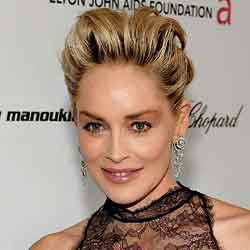The star attraction
 2.4 k views | By Naomi Levin
2.4 k views | By Naomi Levin
Movie stars, pop singers and sports champions are modern-day idols,
worshipped as much for the lifestyle they represent as for their
achievements. How are jewellers capitalising on these celebrities to
market their products? NAOMI LEVIN reports.
When Australian documentary maker Eva Orner won an Academy Award, local journalists were more interested in the clothes and accessories she was wearing than her newly-prized film.Orner was praised on television, on radio, in glossy magazines and on the front pages of newspapers for her attire, giving dress-maker Collette Dinnigan, and jewellery supplier Bulgari, attention that money can’t buy.
For years now, jewellers have used celebrities to gain much-needed exposure in an over-saturated media sphere. While celebrity endorsement is sometimes treated as a dirty word – conjuring up images of cheesy actors being paid to spruik a dodgy line – many top jewellers are using actors, singers and athletes in various ways to draw attention to their brand.
In the past few years, Australia can boast a long line of memorable collaborations between jewellers and celebrities. In 2002, pearl company Autore recruited world-champion swimmer Ian Thorpe to help design and launch a range of unisex pearl jewellery. At the time, Autore head Rosario Autore says that the company had selected Thorpe because he embodied the style of the collection: “classical with an edge”.
A year previously, Australian designer Stefano Canturi took the world by storm when one of his diamond necklaces – a necklace that remains on display in exhibitions around the world to this day – was featured in the blockbuster film Moulin Rouge.
The necklace, called Satine, was worn in the film by Nicole Kidman and featured 1,308 diamonds, totalling 134 carats. It has since been worn in fashion shoots and inspired a spin-off range at Canturi, known as the Rouge Jewels.
Canturi spokesperson Patricia Zagaras says that the Satine necklace helped raise the profile of the top-shelf Australian brand and its chief designer Stefano Canturi.
“The necklace Satine is an intricate and rare representation of the artistry of fine jewellery making and it drew attention to the work by Stefano Canturi from jewellery lovers across the globe,” Zagaras says.
Internationally, celebrities are also being used to promote jewellery ranges and individual pieces. Danish jeweller Ole Lynggaard, a company that is currently expanding internationally, has had a long association with celebrities, including Denmark’s royal family.
Martin Glisby, managing director of Ole Lynggaard Asia Pacific, explains that celebrities have to love the company’s designs and pay for the pieces they take home before they are used in the company’s promotion.
Pop singer Fergie wore a vintage Ole Lynggaard necklace in one of her video clips, while Paris Hilton has actively endorsed the company’s “My Friend” line, which supports charity. At the moment Lene Nystrom, lead singer of Danish band Aqua, is being used in the company’s advertisements.

Heidi Klum
“Our policy has always been that celebrities would have to come to us,” Glisby says. “It took many years for that to happen but it is the most genuine and rewarding way of doing it.”
In 2004, Denmark’s Queen Margrethe commissioned Ole Lynggaard to design pieces on the occasion of the marriage of her son Prince Frederik to Australia’s own Mary Donaldson. Glisby says that the Danish royal family visit the Ole Lynggaard offices regularly, but Lynggaard himself does not like to leverage that connection in his marketing strategy.
“We have never used information about our celebrity customers in our marketing in Scandinavia,” Glisby says. “Apart from Ole’s reluctance to use it in our marketing, another reason is that we don’t really need to use it in Scandinavia. We have been selling in Scandinavia for 45 years and enjoy close to 100 per cent brand recognition.”
He added that celebrity connections are important on Ole Lynggaard when tapping into markets outside of Scandinavia.
Marketing expert Michael Kiely, a former editor of Marketing magazine and editor of www.michaelkielymarketing.com.au, agrees that using celebrities to promote jewellery can be hugely beneficial to companies. He warns though, that it is not without its risks.
“I think it is fantastic where it works,” Kiely says, “but you have to start with a strong brand to counteract the ‘vampire effect’.”
He describes the vampire effect as the tendency for the celebrity to overpower the brand. Rather than remembering the brand or product, the customer only recalls the celebrity.
“It can be a risk for less well-known brands, but this risk can be counteracted if a celebrity commits for a long period of time.”
Kiely says that there is such a thing as the right and wrong celebrity to use in promotion.
“A ‘good’ celebrity endorsement is Yul Brynner doing anti-smoking commercials,” he says. “I don’t think Seinfeld’s George Costanza (Jason Alexander) would make a good endorser.”
Not all effective marketing involves a celebrity though. In the jewellery industry, many products are sold based on the value of the commodity and the design, rather than on the brand. Celebrity endorsement can end up being expensive and not necessarily useful.
“My immediate thought is that spending money on a celebrity can be a waste of time,” Kiely says. “Gerry Harvey (founder of Harvey Norman) is the best ‘celebrity’ they ever used.”
Of course, there is also the risk of a celebrity-endorsement deal being tainted by a misbehaving star. Swiss watchmaker Raymond Weil had this problem when it paid movie star Charlize Theron an eight-figure sum to exclusively promote its timepieces. During the course of the deal, Theron was pictured wearing a Christian Dior watch and Raymond Weil sued her for breach of contract.

Sharon Stone
Max Markson, celebrity agent and founder of Markson Sparks, has a slightly different take on the risks of celebrity endorsement. He thinks that if the celebrity is managed correctly by their agent, the risk to the brand is minimal.
“You brief your star about (the risks). There are words in the contract and penalties, but you need to brief them,” Markson says. “When you sit down with the star, you say, ‘We love you dearly, we’re giving you all this money, we’re going to use your name and face in our campaign and, for that, you need to exclusively wear our jewellery’.”
The agent, who has managed celebrities from Nelson Mandela to Joe Bugner, says that there are ways for companies to get value out of their celebrity endorsers.
“You can make the relationship with the celebrity stronger and get the celebrity closer so that they almost do more than they would otherwise do; they are likely to go above-and-beyond the contract because you’ve fostered a relationship with them.”
It’s not enough to send a movie star onto the red carpet wearing a pretty necklace, however. Companies need to do more than that.
“You need to exploit the relationship more and that is a matter of the marketing, the advertising and probably most importantly, as a PR tool,” Markson says.
He suggests offering celebrities really spectacular items that encourage people to ask what they are wearing, and then leveraging that attention by doing a joint photograph with the designer and the celebrity.
Despite the risks, Markson says there is an obvious benefit to using celebrities in marketing, as opposed to other marketing strategies: “Two words: cut through,” he says. “If you use a celebrity it helps you stand apart from other brands and I think that is the most important part.”
As with any marketing strategy, it is virtually impossible to quantify the impact that a celebrity can have on a brand.
Did seeing the Satine necklace while watching Moulin Rouge encourage women to go out and purchase Canturi jewellery? Was it Ian Thorpe who led the resurgence in pearl jewellery? Do Danish women buy Ole Lynggard’s pieces because they know the company is favoured by the royal family?
It is difficult to tell. It does seem to be the consensus among marketing experts, however, that using the right celebrity – someone who promotes product they would actually wear – is beneficial.
If done correctly, it can -cut- through the high mountains of other television commercials and magazine advertisements to position the brand, promote a new line or just increase brand awareness.
Posted August 01, 2009